This last week Chris and I spent some time in Idaho with family, but we also made a pit stop to see our dear friends in Rexburg, Idaho, and finish their nursery that we started. You might remember from this mood board that we planned to install the peel-and-stick mural wallpaper from our new Pottery Barn Kids collection, and I'm really excited to show you how we did it! P.S. This is a photo from our PBK photoshoot, but stay tuned for the final nursery reveal coming soon.
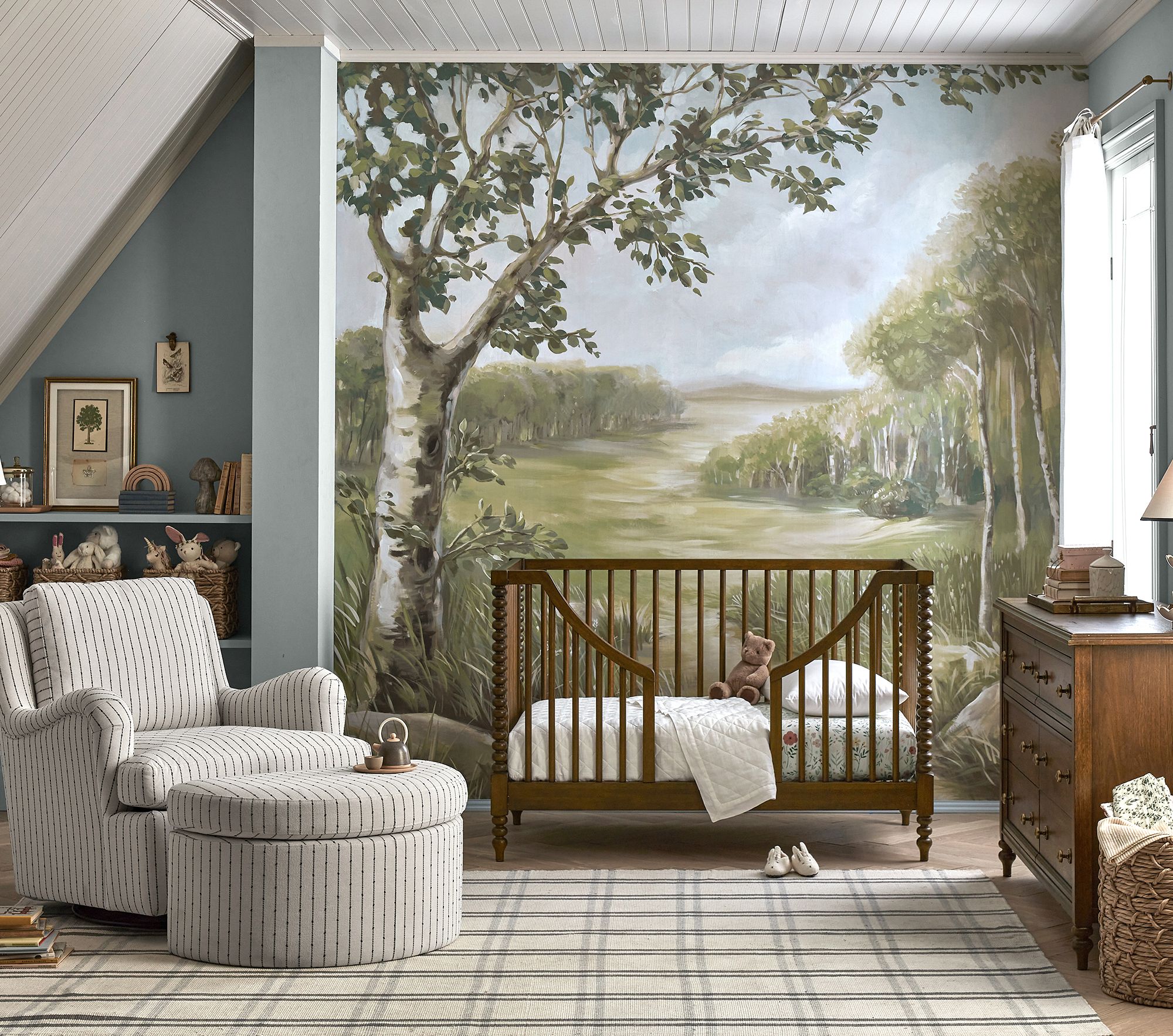
Shop our CLJ x pottery barn kids collection
This whimsical, easy-to-apply wallpaper adds a foresty touch to any nursery, kid's room, or really anywhere you see fit! The peel-away backing is going to make any professional installer happy, but it's also very DIY friendly, not to mention budget-friendly! The entire mural comes in a pack of 6 panels for the price of $169, which is nearly unheard of in the world of wallpaper, let alone mural wallpaper. Each panel is 9' tall and 1.5' wide, which would be perfect for installing on a wall that's 9 feet or less. However, if your wall happens to exceed that, no problem. For little Freddy's nursery, we added some picture-frame molding around the mural–here's how!
Materials & Tools
Mural Wallpaper
Razorblade Knife
Vinyl Squeegee
Measuring Tape
Chalk Line
Oscillating tool with round blade
Construction adhesive
Pin nailer
Speed Square
Trim of choice
Instructions specifically for applying to a wall that is larger than the mural itself.
1. Mark the mural placement on the wall
Measure the wall and determine the center point. You can start with panel three flush with the midline and work your way out. Alternatively, you can find the total width of the wall, subtract 9ft (the total width of the mural), then divide the remaining number by 2. This is how many inches away from the left wall you will begin panel 1.
Next, decide how much space you want above and below the mural (equal to or less than the excess space on the left and right sides) and measure this distance from the ceiling or crown molding. Mark the two ends of where the mural will be, and run a chalk line from one to the other. This will be the guide for the top of the mural.
2. Hang the first panel

Now comes the fun part. Whether you begin with panel three (starting at the center and working outward) or panel one (left to right), peel the top 8 inches of the backing down and line the top of the mural with the chalk line. Apply slowly, top to bottom, using a soft, straight-edge of squeegee vinyl tool to flatten out any air bubbles. Chris used a cardboard children's book–whatever gets the job done!
As you work your way down, peel more of the backing down and smooth the panel out with the vinyl tool. If bubbles or wrinkles form, grab the panel on each side and gently pull away from the wall until the bubbled area is released, then reapply, starting in the middle and scraping outward with the vinyl tool.
3. Hang the remaining panels
Choose your next panel and line it up with the first. The vinyl stretches a little to help with alignment, but if you’re having to stretch too much, you’ll never get it lined up correctly. If you find yourself having a wider and wider gap between the panels as you work your way down, carefully peel the mural off the wall from the bottom up, adjust the top, and slowly reapply downward. You may need an extra set of hands to hold the mural away from the wall as you do this so it doesn’t stick at a lower point and cause wrinkles and bubbles.
4. Trim the edges

Once all the panels have been hung, measure and mark your bottom trim line so it is the same distance from the floor/baseboard as the top line is from the ceiling/crown. Use a razor blade knife and a straight edge to trim along this line. Use the razor blade to also trim the white from the top of the panels along the ceiling. Peel off the trimmed areas.
Note: if there are outlets or switches on the wall where the mural is being added, remove the cover plates before applying the mural. Once you apply the mural and get to an outlet, use the razor blade knife to cut out around the outlet/switch. You can also apply any remaining trim pieces taken from the bottom of the mural to the outlet/switch covers to help them blend into the mural.
5. Adding Trim

Before applying the trim, we painted it to save us from having to tape the mural off and risk getting paint on it. We chose this trim we found from their local hardware store, but you can really use whatever you'd like!
One thing to note when installing the trim is to keep your trim placement as parallel to the walls or floor and ceiling as possible. The trim doesn’t have to follow the edge of the mural necessarily but should be lined up with the walls as this will make it feel visually lined up, even though most ceilings and walls are not squared with each other.
Measure the top piece of trim first, mark the mitered corners with the square, and cut with the oscillating tool.

Lastly, you'll apply a thin line of adhesive to the back, hold the trim in place, and tack in with a pin nailer. Repeat on all four sides, taking note of the directions of the mitered edges to get them to line up. After a bit of touch-up caulking and painting, if necessary, you're finished!

We'd really love to see how you use this mural in your own homes, so please be sure to tag us on Instagram and use the hashtag #cljxpbk!

Leave a Reply

WE'RE CHRIS + JULIA
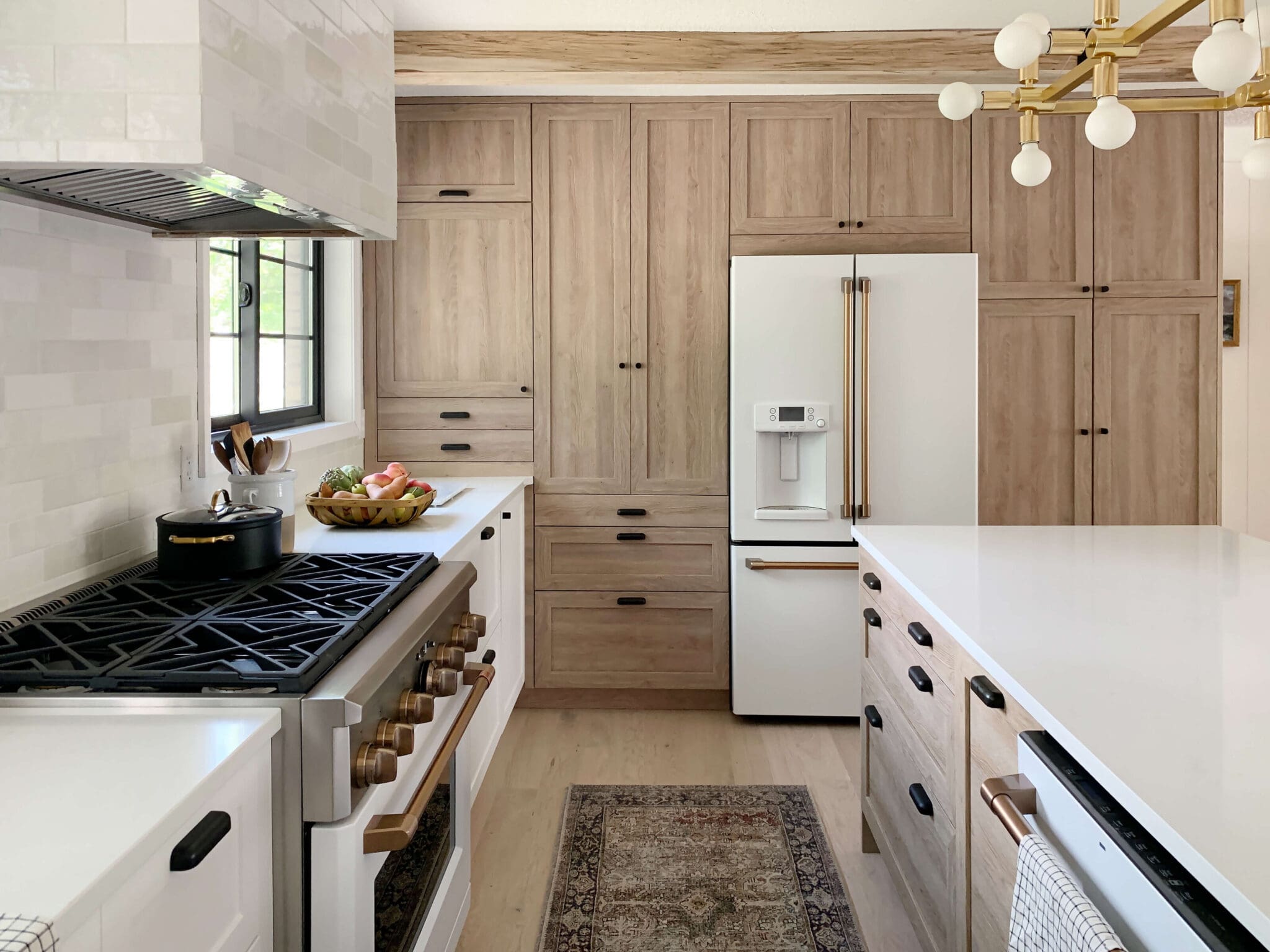
Portfolio
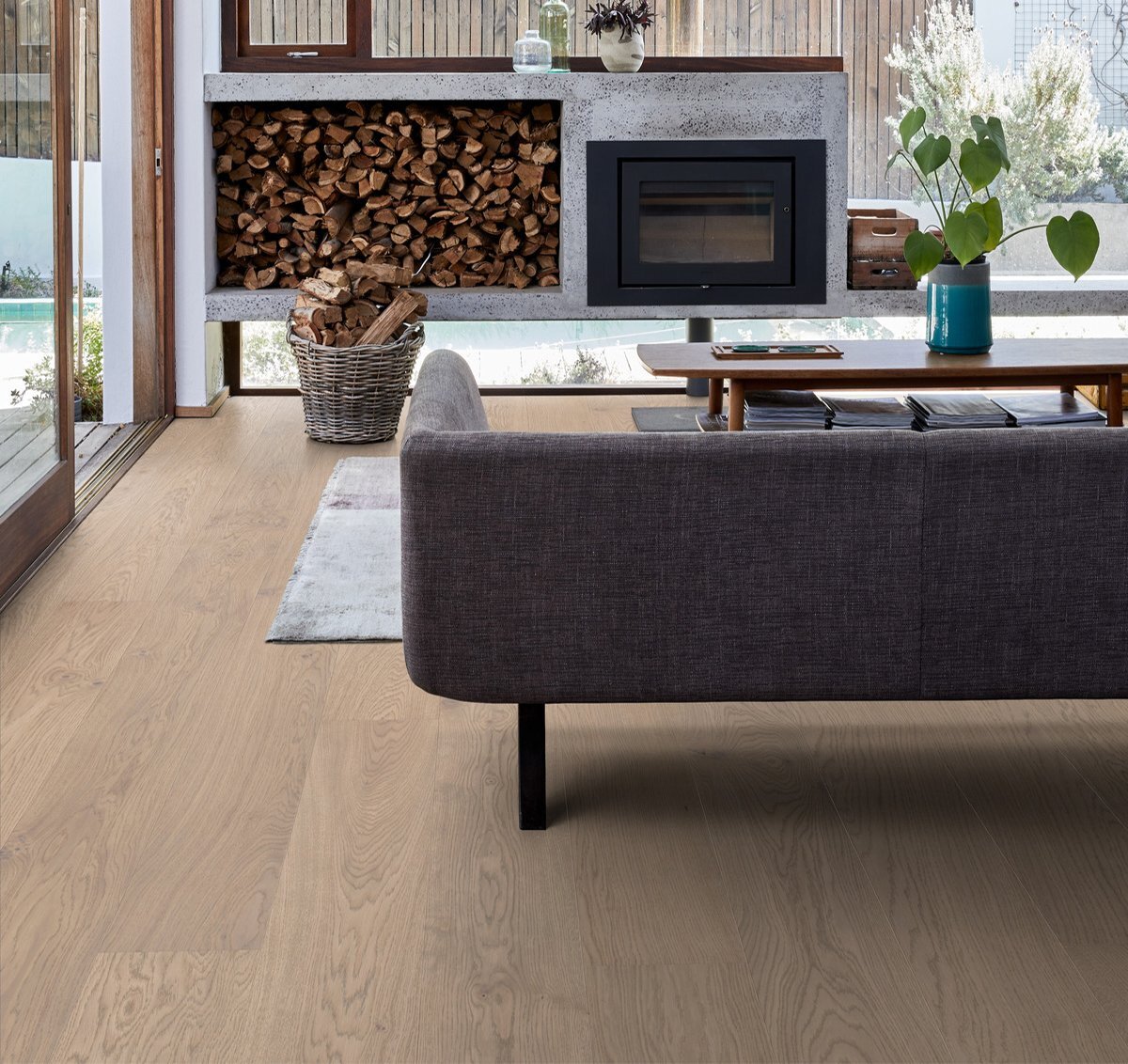
Projects
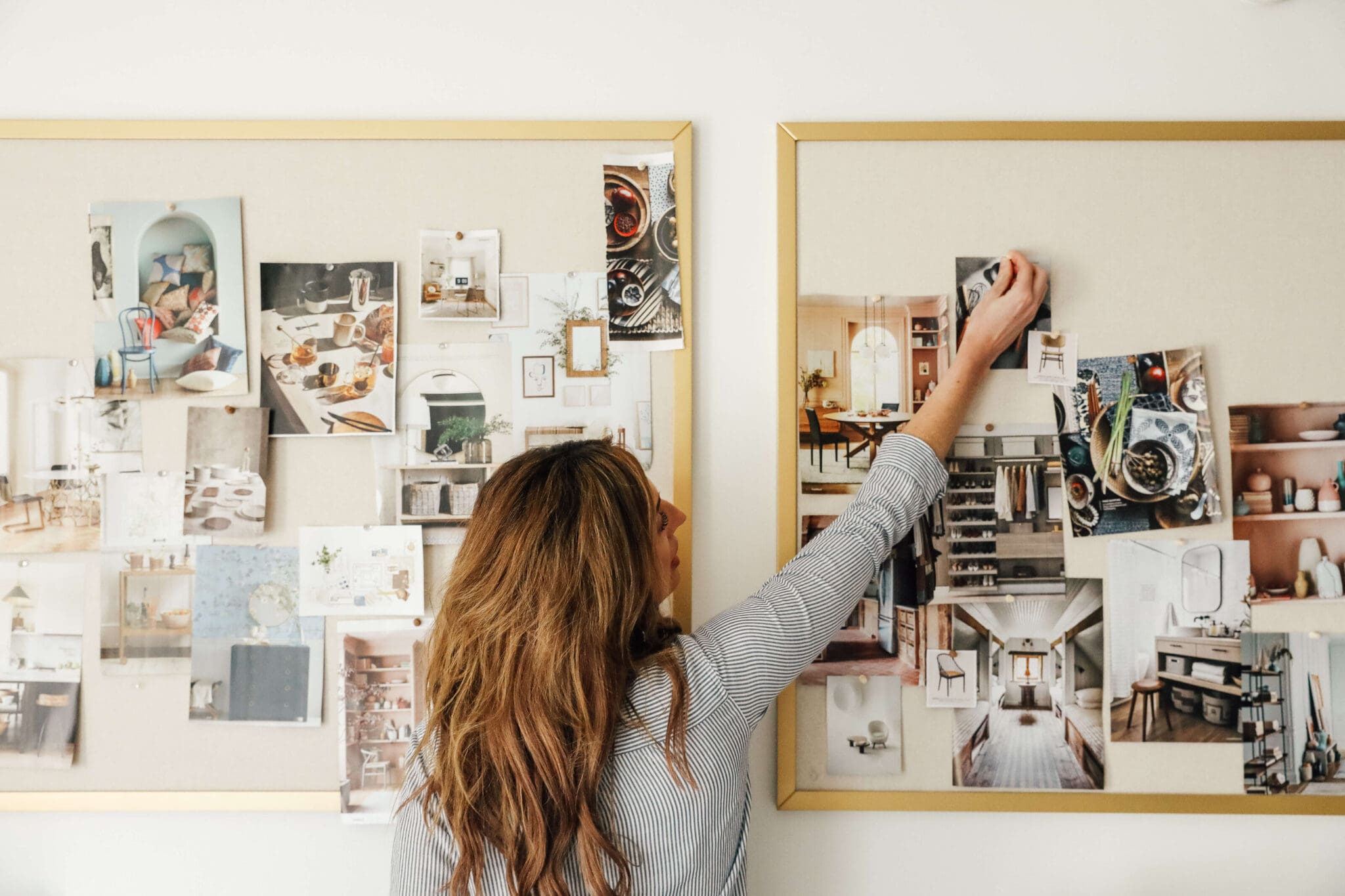


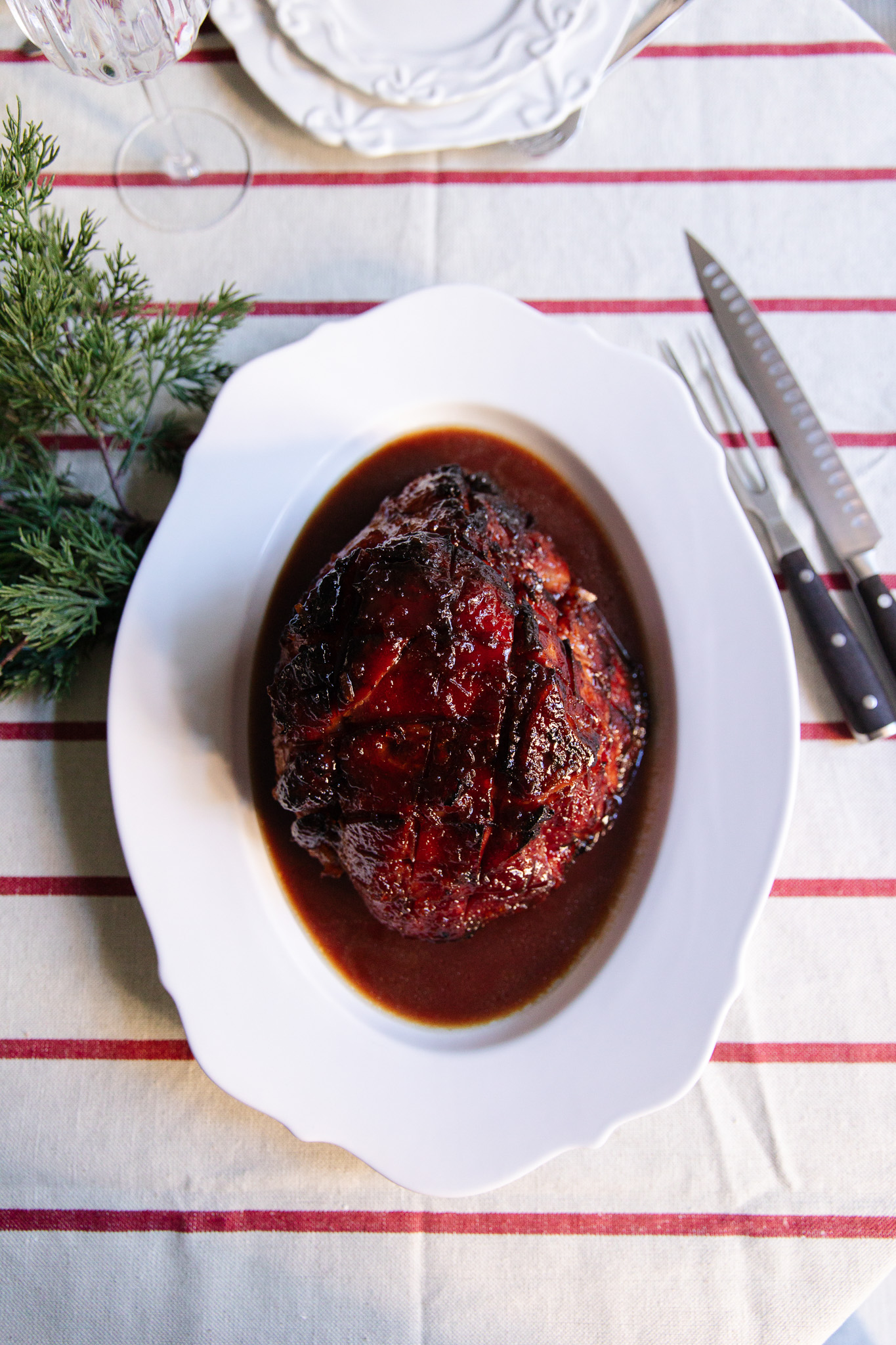
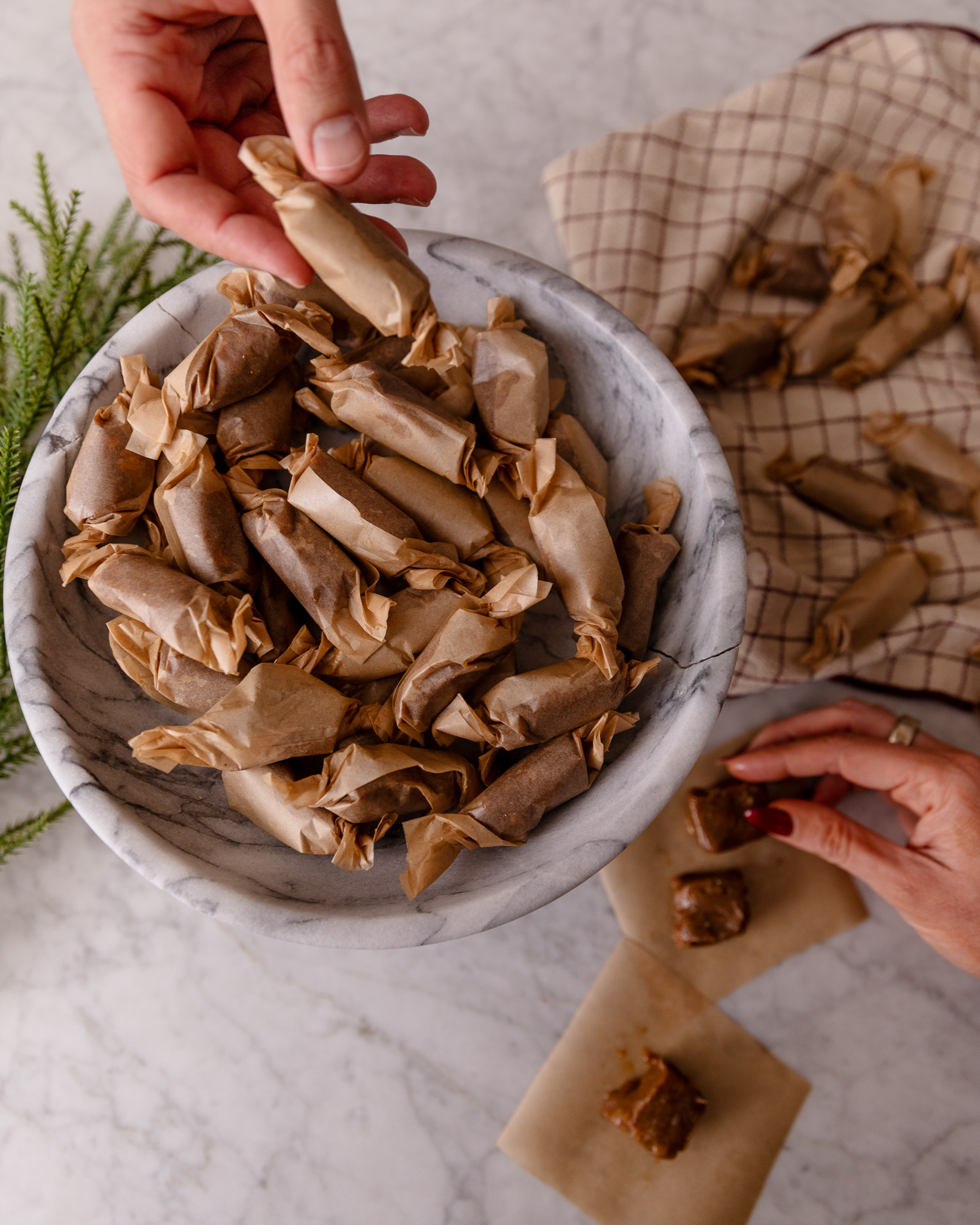

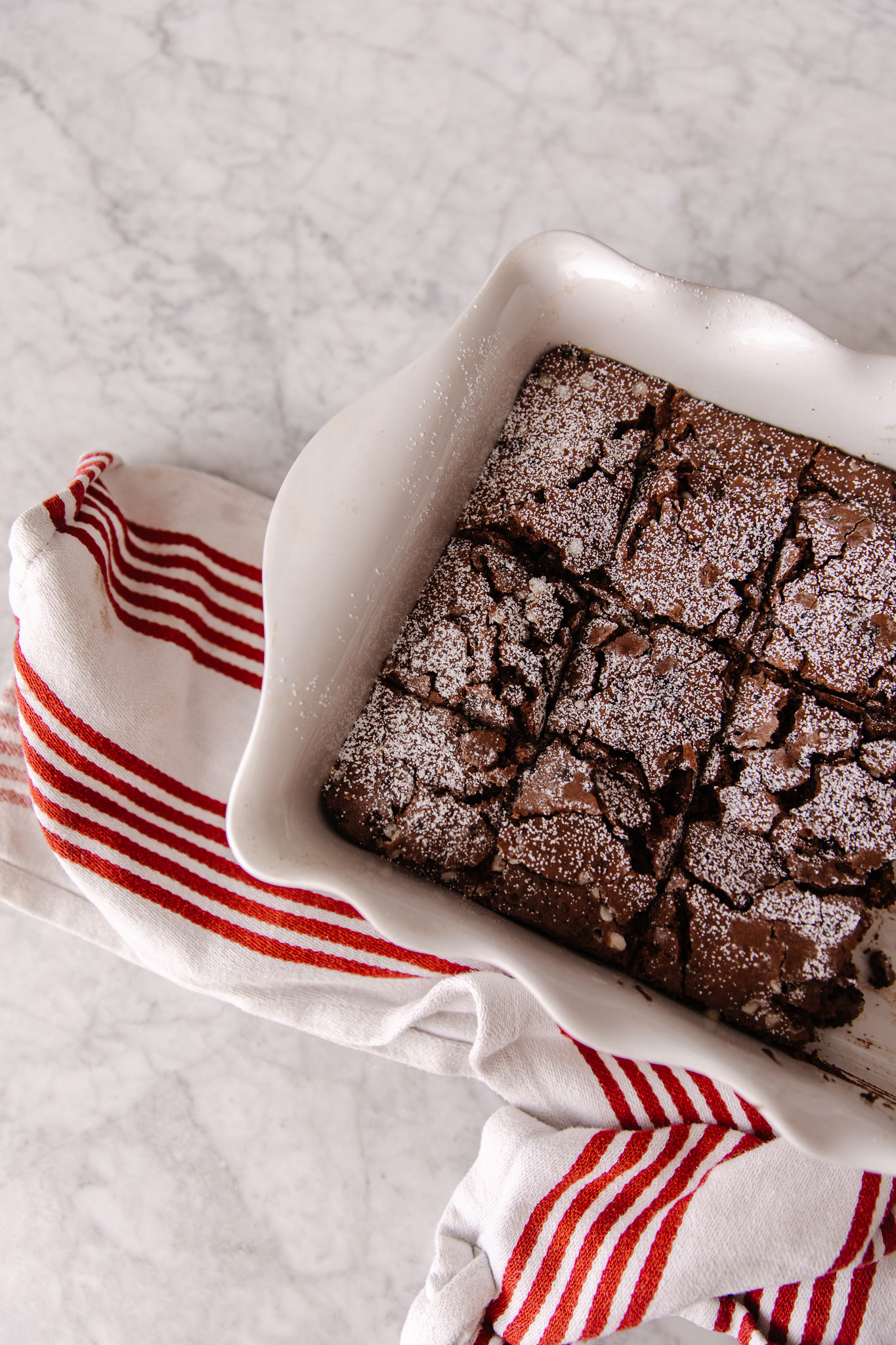
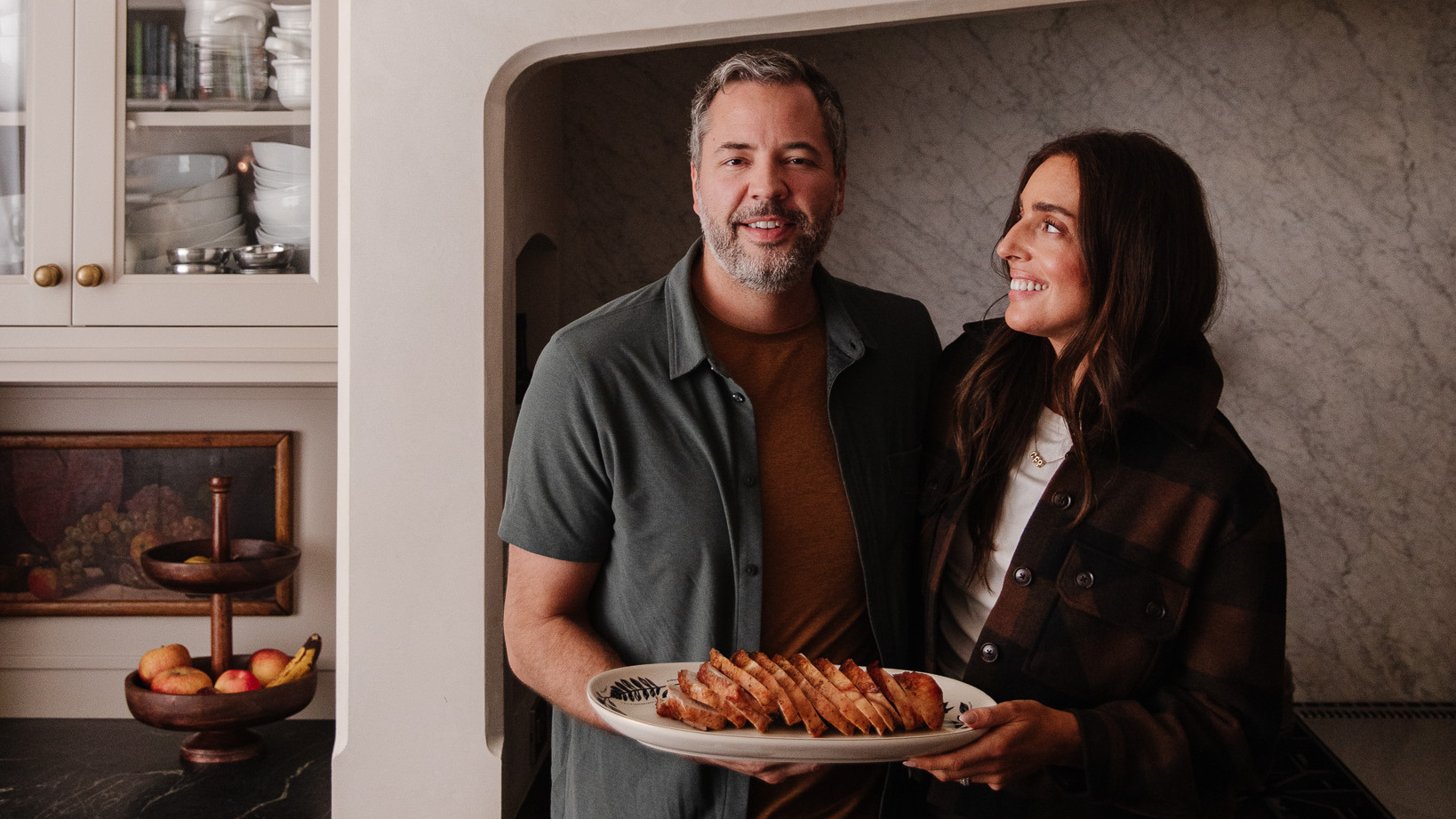

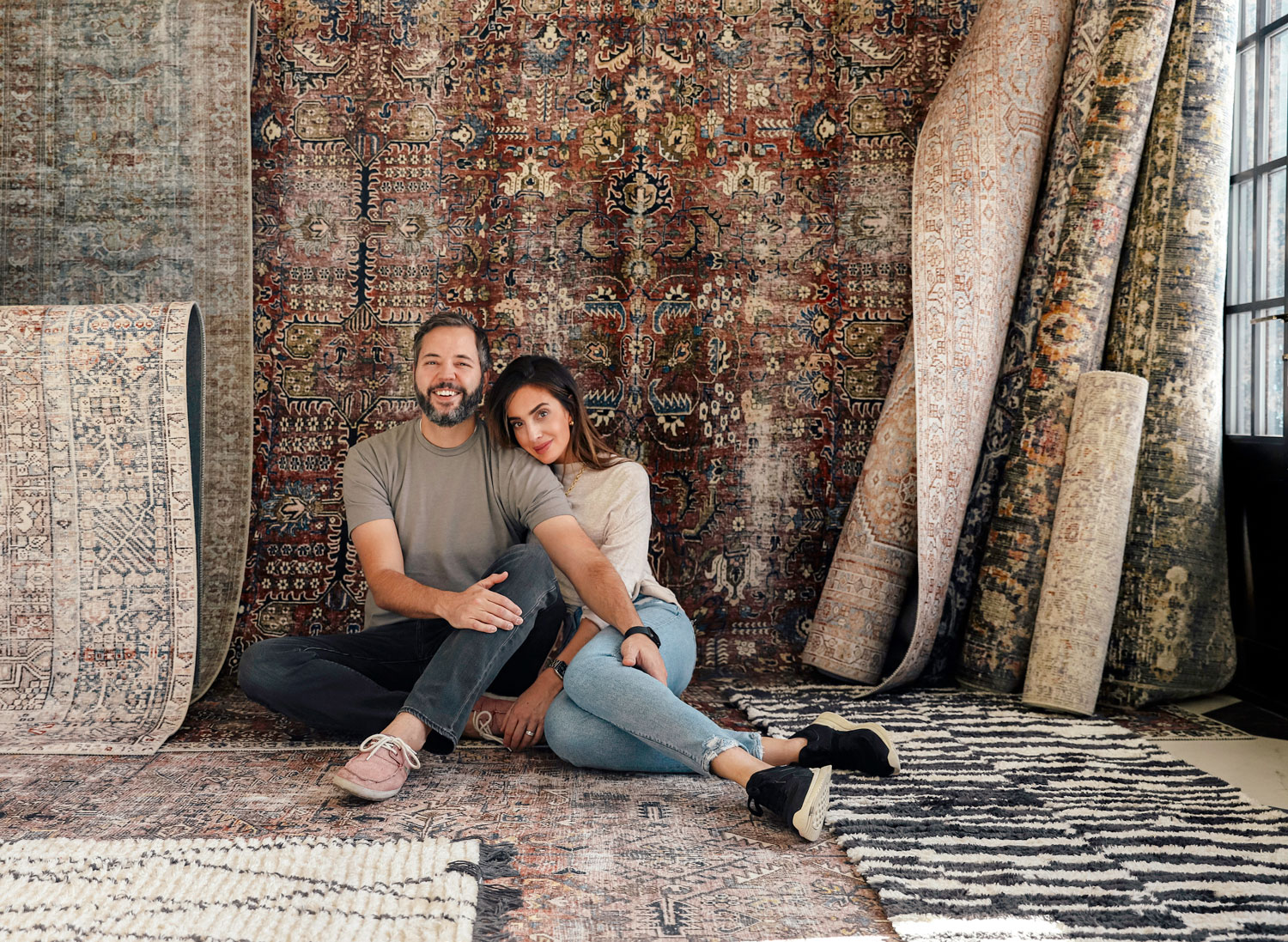
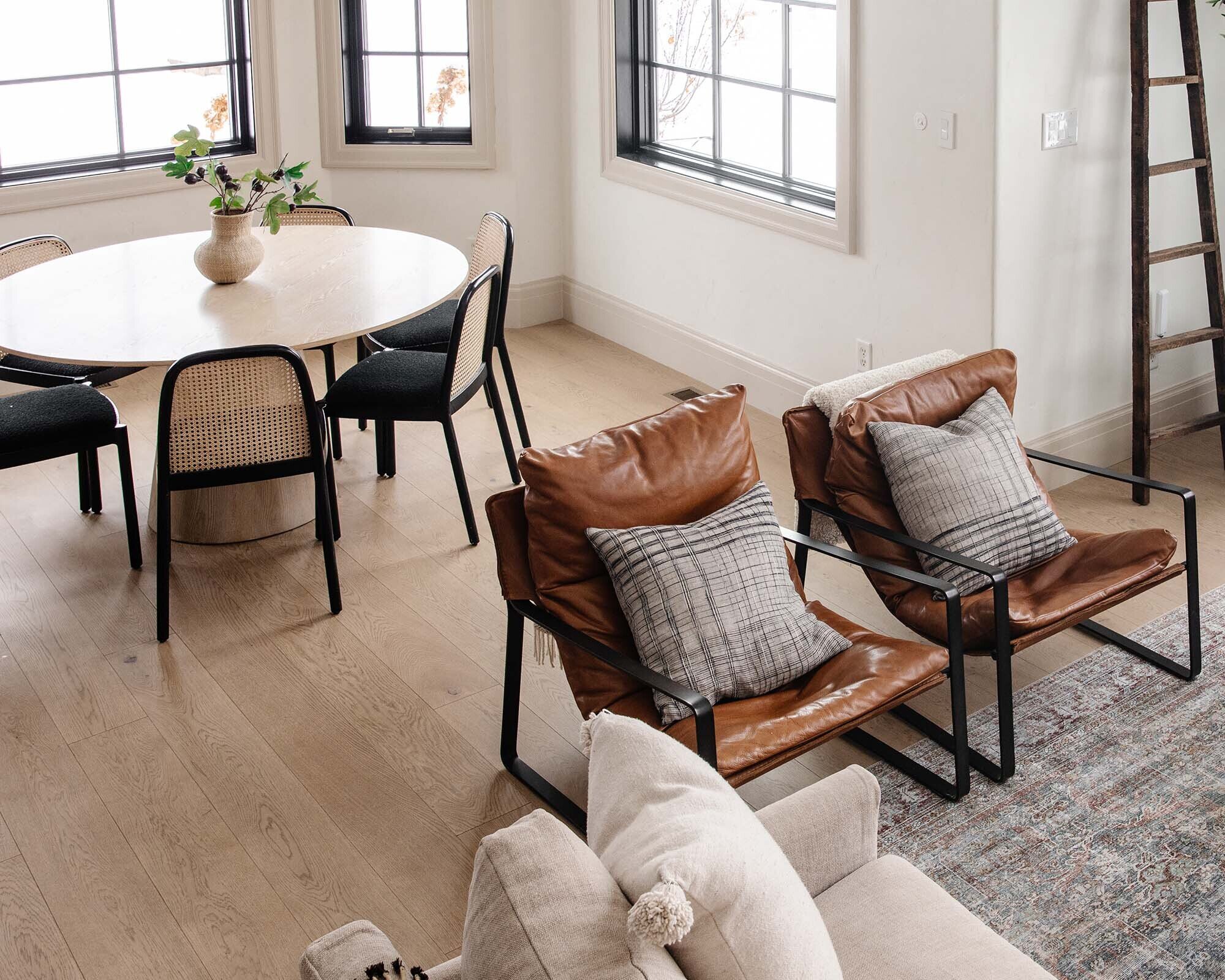
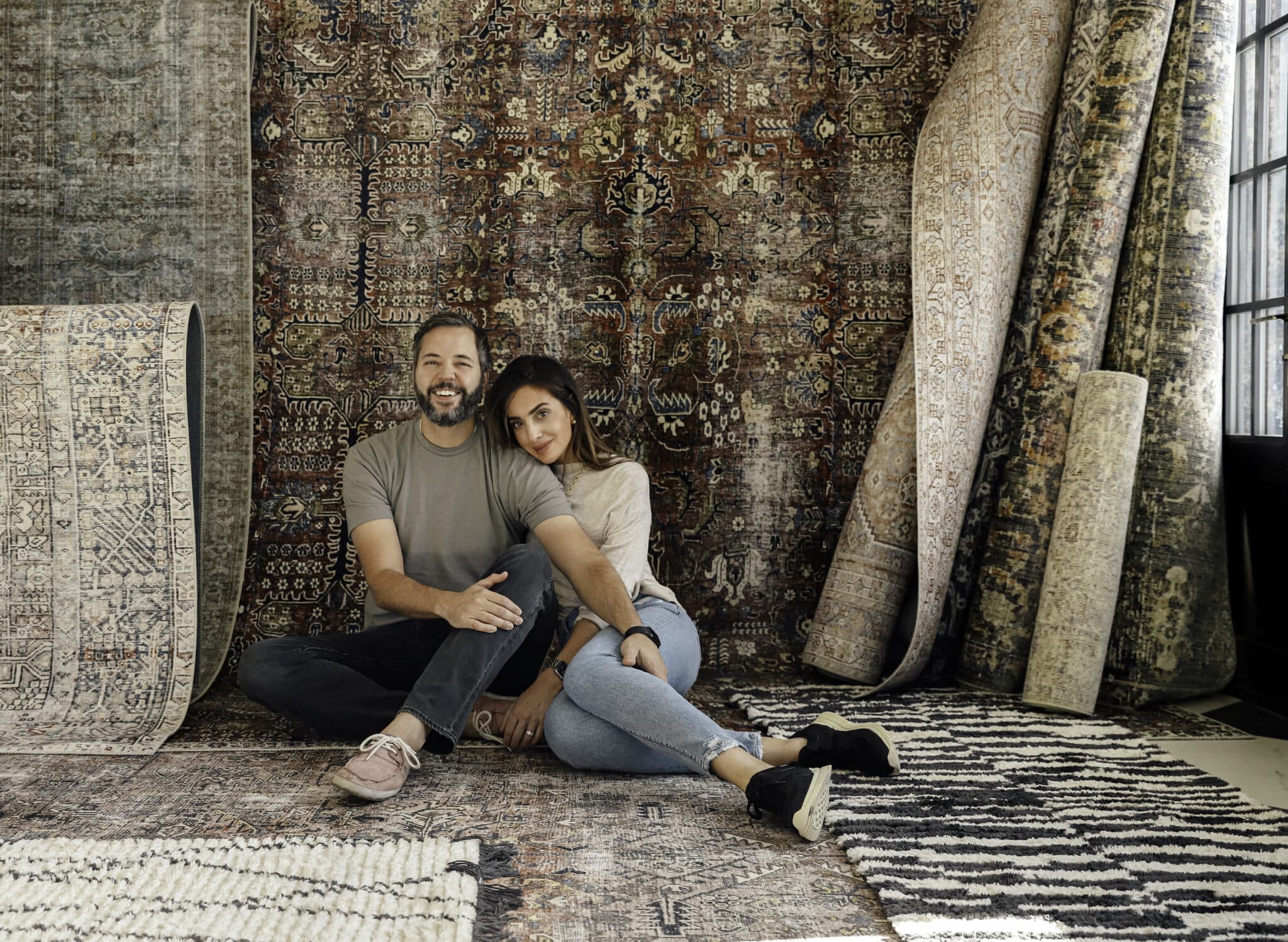
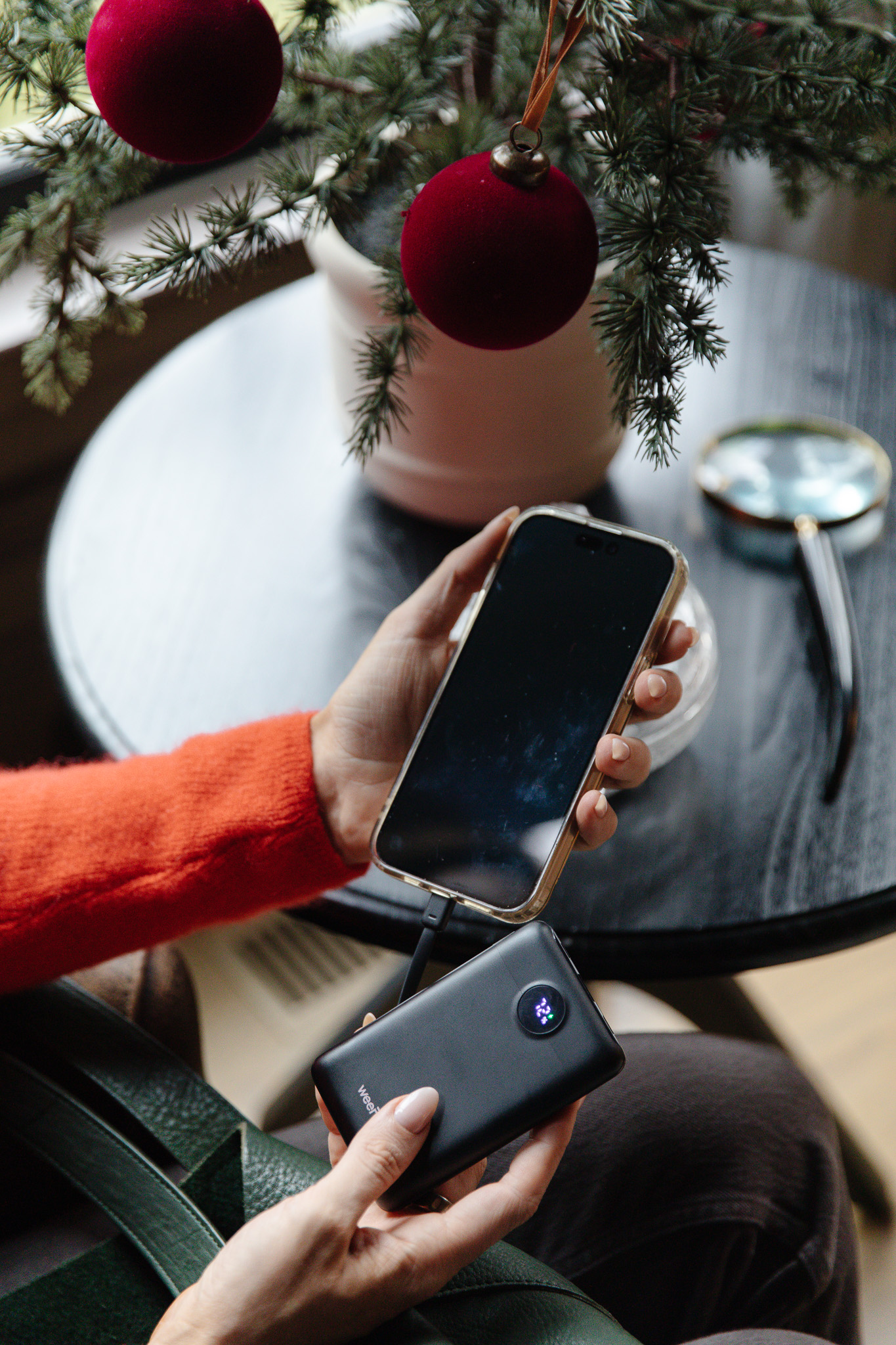
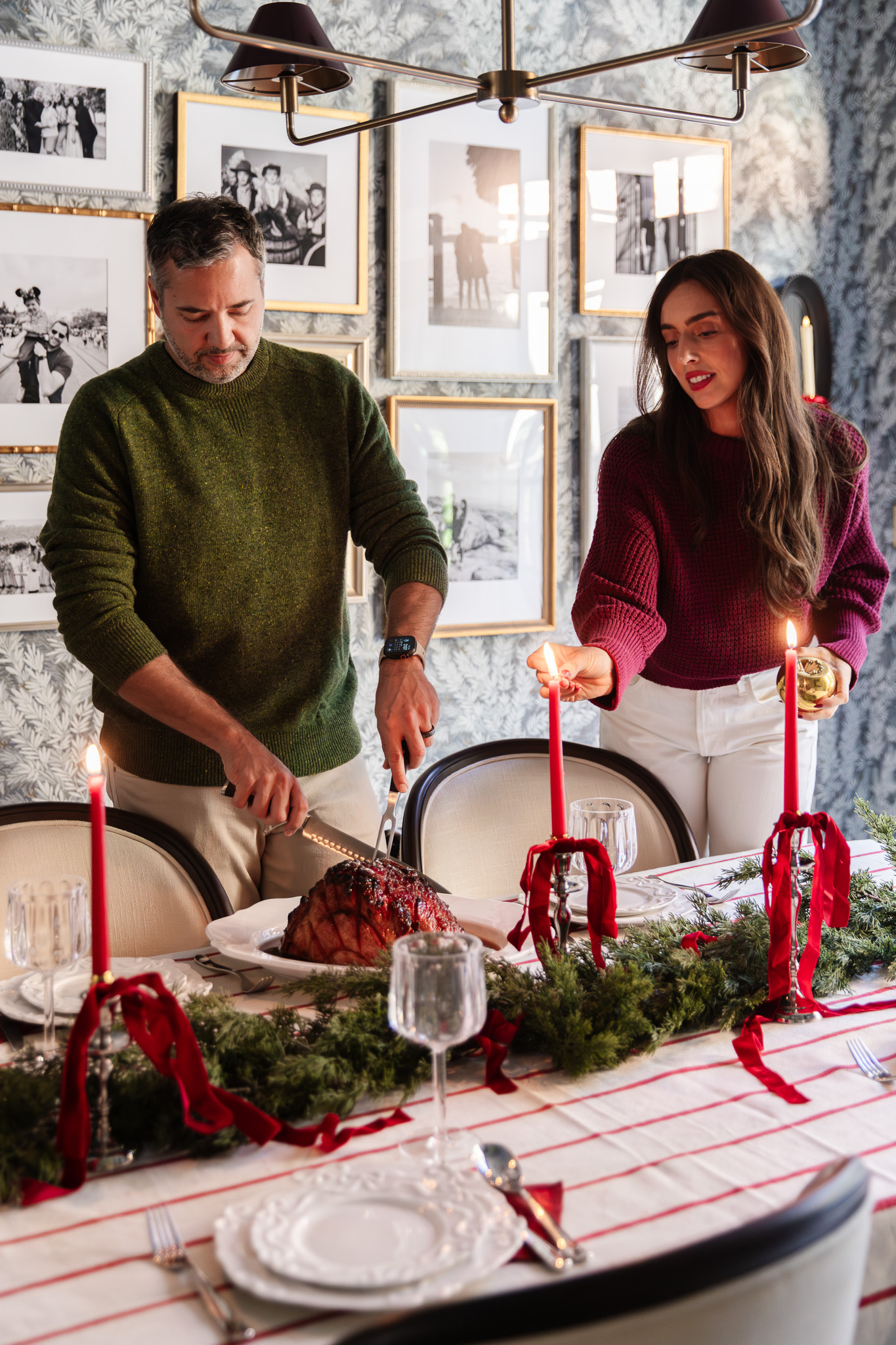
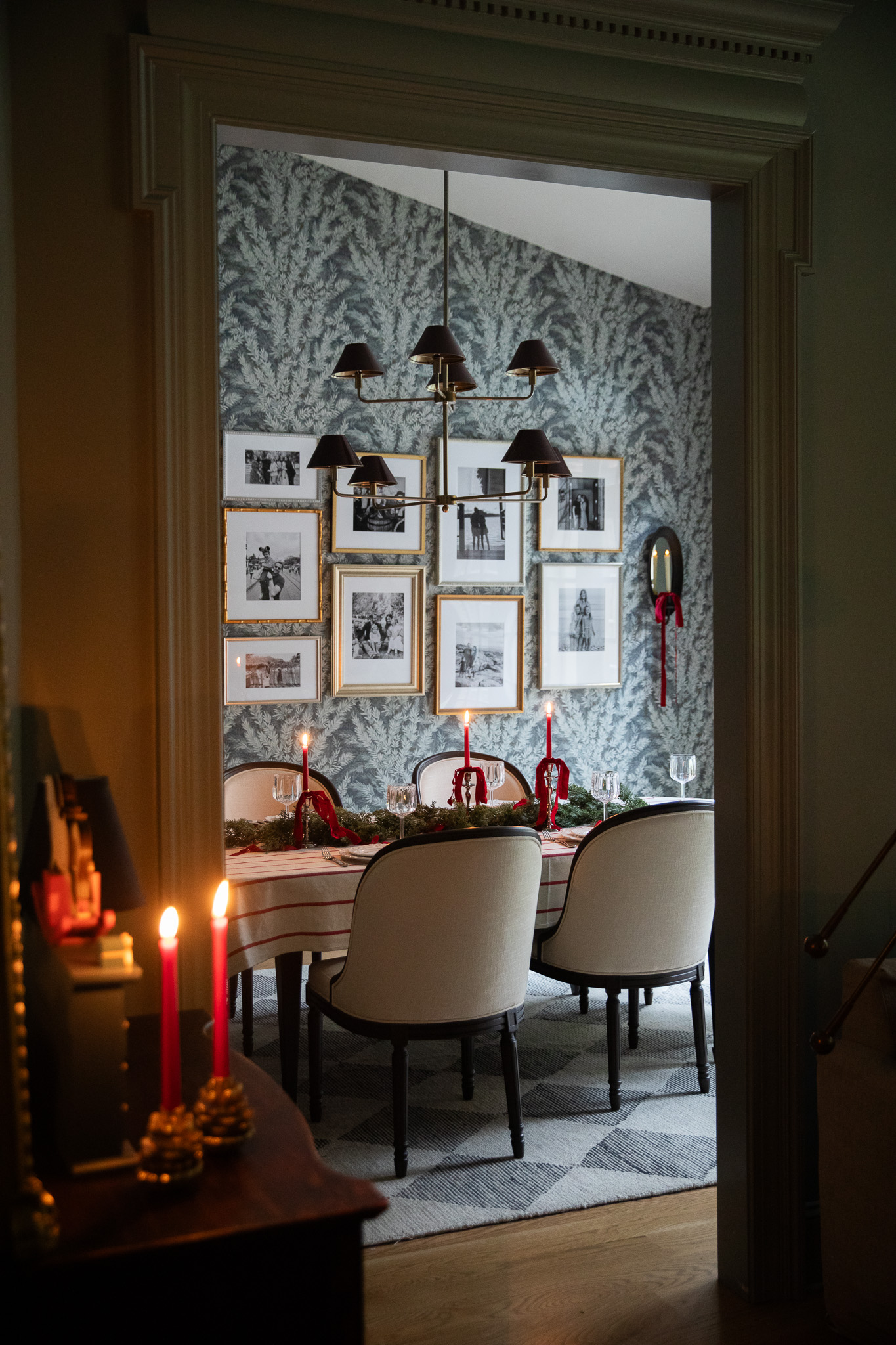

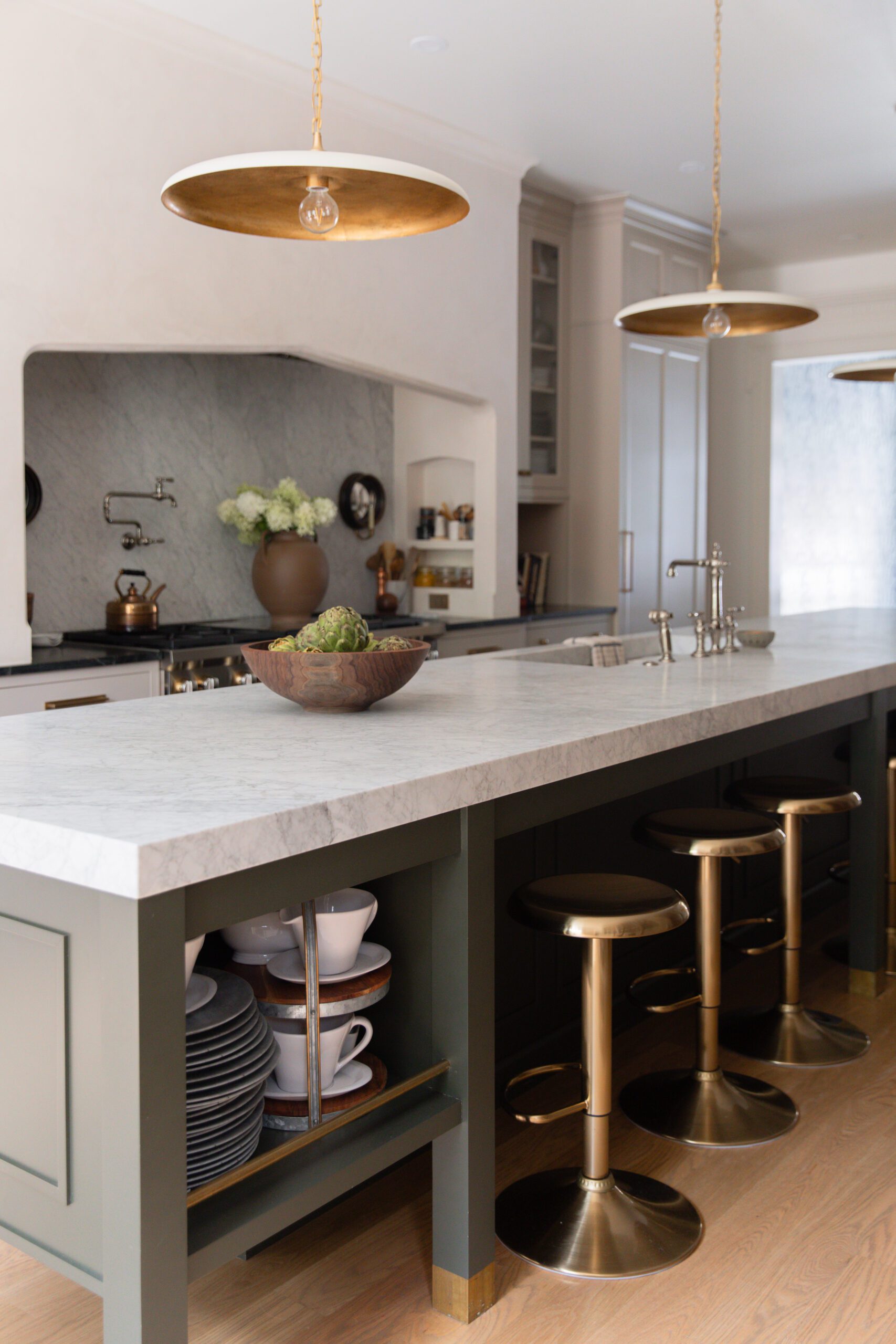

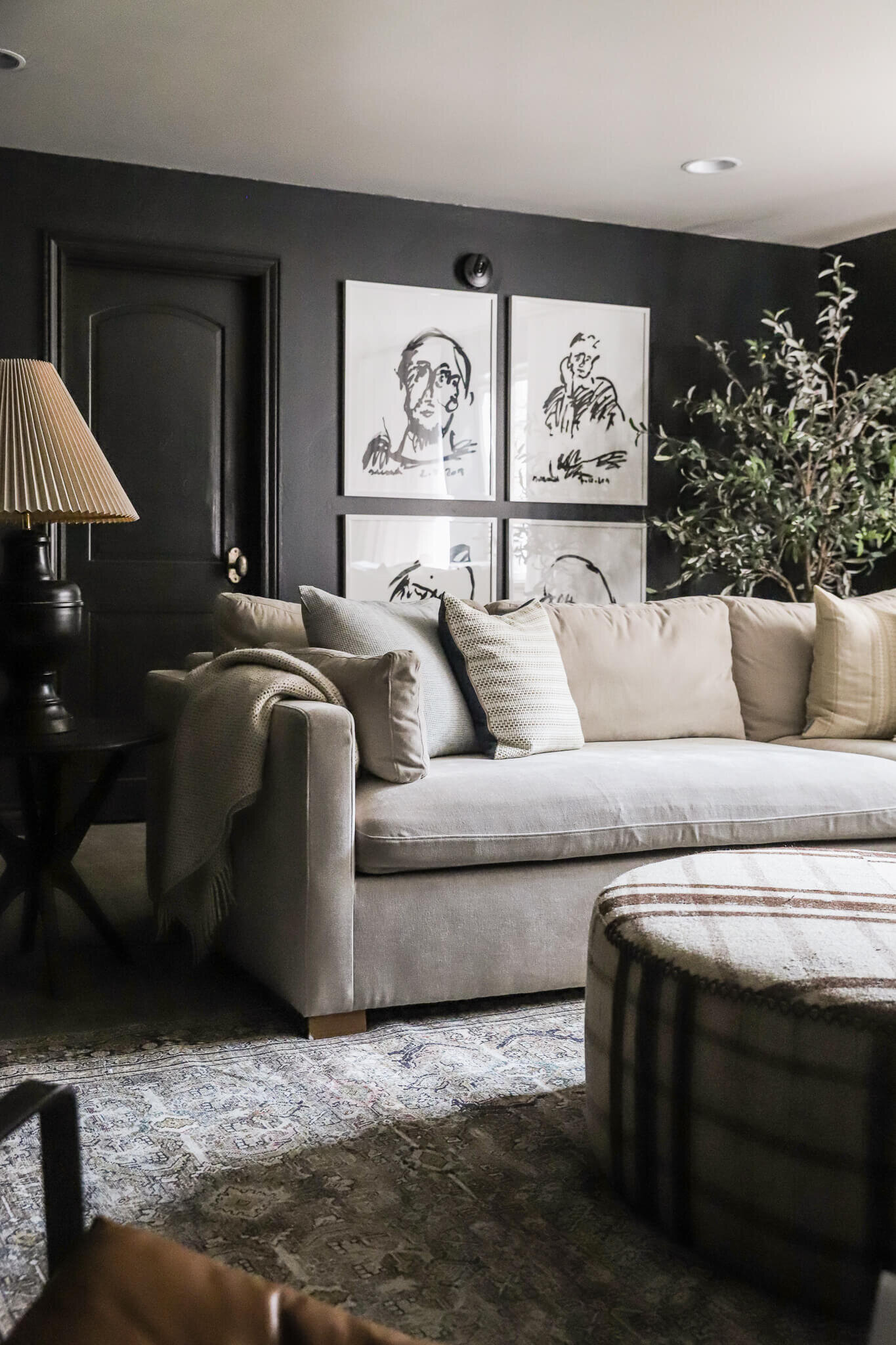
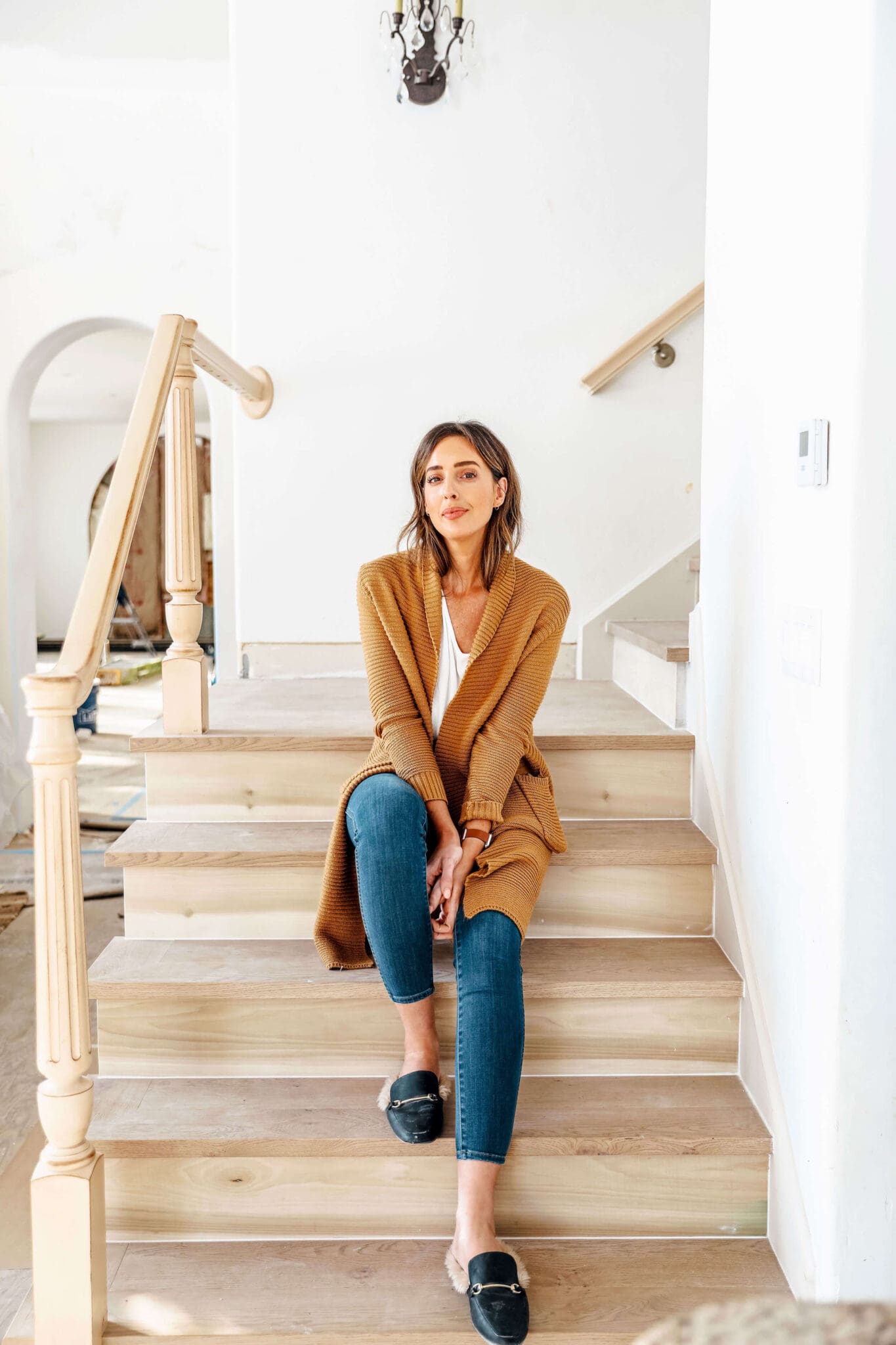

Absolutely beautiful! I just may have to do this in my grand babies room!!
Very clever!! I love this!